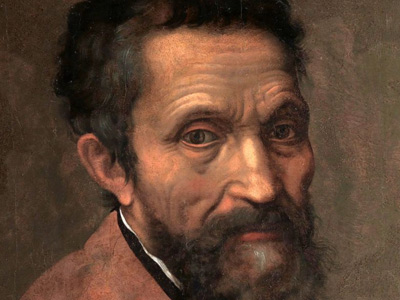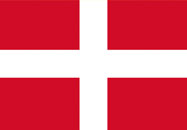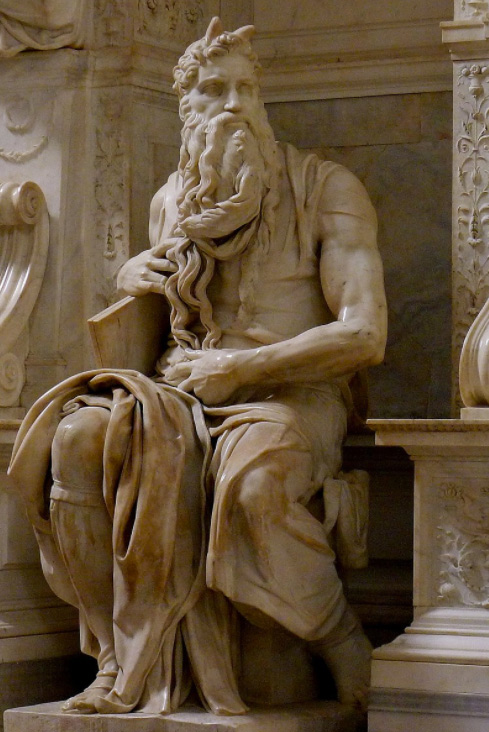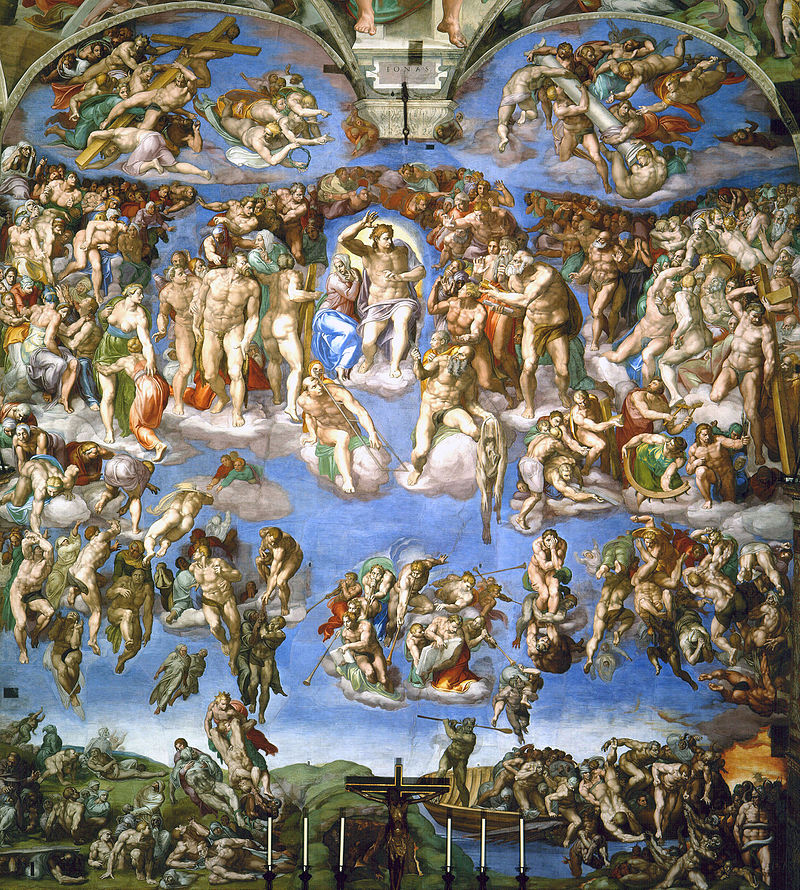Michelangelo (1475-1564)
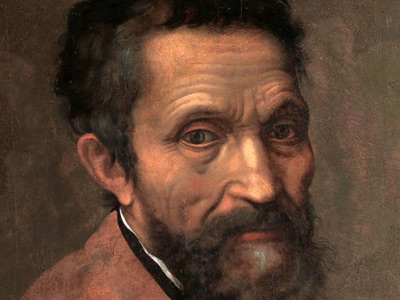
Final Years
In his old age, Michelangelo created a number of Pietàs in which he apparently reflects upon mortality. They are heralded by the Victory, perhaps created for the tomb of Pope Julius II but left unfinished. In this group, the youthful victor overcomes an older hooded figure, with the features of Michelangelo.
The Pietà of Vittoria Colonna is a chalk drawing of a type described as "presentation drawings", as they might be given as a gift by an artist, and were not necessarily studies towards a painted work. In this image, Mary's upraise arms and upraised hands are indicative of her prophetic role. The frontal aspect is reminiscent of Masaccio's fresco of the Holy Trinity in the Basilica of Santa Maria Novella, Florence.
In the Florentine Pietà, Michelangelo again depicts himself, this time as the aged Nicodemus lowering the body of Jesus from the cross into the arms of Mary his mother and Mary Magdalene. Michelangelo smashed the left arm and leg of the figure of Jesus. His pupil Tiberio Calcagni repaired the arm and drilled a hole in which to fix a replacement leg which was not subsequently attached. He also worked on the figure of Mary Magdalene.
The last sculpture that Michelangelo worked on (six days before his death), the Rondanini Pietà could never be completed because Michelangelo carved it away until there was insufficient stone. The legs and a detached arm remain from a previous stage of the work. As it remains, the sculpture has an abstract quality, in keeping with 20th-century concepts of sculpture.
Michelangelo died in Rome in 1564, at the age of 88 (three weeks before his 89th birthday). His body was taken from Rome for interment at the Basilica of Santa Croce, fulfilling the maestro's last request to be buried in his beloved Florence.
HISTORY
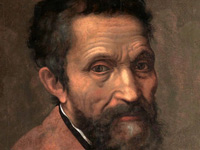
RESOURCES
This article uses material from the Wikipedia article "Michelangelo (1475-1564)", which is released under the Creative Commons Attribution-Share-Alike License 3.0.
© Stories Preschool. All Rights Reserved.
